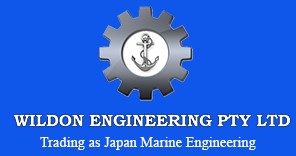Cathodic Protection in Marine Application: What is it All About?
Blog | December 13th, 2019
Cathodic protection is used to protect marine vessels from corrosion. That’s a general description for a complex subject. Remember, marine vessels are made of different alloys. Furthermore, the protection doesn’t coat the metal in some invisible finish, nor does an oxidization event only involve pure water. For one thing, oceangoing ships cross briny seas. The salt acts as an electrolytic augmentation compound. As for the protection system, it’s not a coating at all.
Zinc-Based Cathodic Protection
A protective coating might work, but imagine how expensive it would be to paint an entire hull in that oxidization-proof fluid. Now picture a scratch running several meters along the bottom of a ship. Maybe the vessel scratched itself on some blunt rocks below the ship waterline. With the coating damaged, the exposed metal corrodes. Cathodic protection is employed without the use of any special coatings. To incorporate the system, standard industry practices use zinc anodes. These fittings last for 10 to 20 years before needing replacement. Back with the marine vessel, the expected electrochemical reaction is now altered. Instead of the steel hull and exposed metal fittings corroding, the zinc anode “sacrifices” its free electrons. Galvanically, the zinc anode is a nobler or more anodic metal, so it corrodes in lieu of the steel ship fittings.
Active Current Cathodic Protection
Water tanks, those humble home fittings, employ cathodic protection systems. A zinc rod is screwed into hot water storage systems to protect their steel tanks. Like their marine-capable peers, these zinc rods corrode in place of a tank’s oxidization-prone steel jacket. Better yet, though, instead of a zinc anode dissolving in the water over the course of several years, why can’t the anode transmit electrons from elsewhere? That’s how an impressed current cathodic protection system works. A small trickle current is wired up to the anodes. As the bolted-on zinc completes its electrochemical circuit, it’s the wire current, not the metals’ free electrons that flow. Solutions like this are used in marine applications to protect large tankers, smaller marine vessels, submerged pipelines, oil platforms, and harbour dock gates.
Of course, there are always other options. Hot-dipped galvanic protection creates a special coating around steel parts. Heat-treated alloys discourage oxidizing effects, too. Both methods work well, but they’re not really practical solutions for large boats. Vessels, ships made of large sheet steel, use mild steel panels. Welded into one seamless hull shape, the mild steel is tough but corrosion-prone. A single cathode protection mechanism, linked by wires throughout a small marine craft, will provide plenty of rustproofing. For larger vessels, however, we use impressed current cathodic protection systems, plus a number of strategically located hull anodes, all of which are made out of sacrificial zinc plates.
Optimized by NetwizardSEO.com.au
Recent Posts
- Turbochargers Supply from Japan Marine: Wildon Engineering’s Excellence in Global Shipping
- Mitsubishi VOS Ballast Water Treatment System: Next-Generation Marine Environmental Solutions
- Yanmar Marine Compressors: Reliable Power Systems for Commercial Vessels
- Water-Lubricated Stern Tube Bearings Explained: How EVR Technology Supports Marine Propulsion
- YANMAR Auxiliary Generator Engine Parts for Commercial Vessels
- Fluid Control Systems: Innovations in Marine Applications
- Yanmar Diesel Generators Australian Distributor: Power for Shipping & Marine Operations
- Navigation & Communication Equipment: Essential Tools for Safe Voyages
- Stern Tube Seals: Preventing Leaks & Maintaining Vessel Integrity
- Innovative Cathodic Protection Technologies for Maritime Industries
